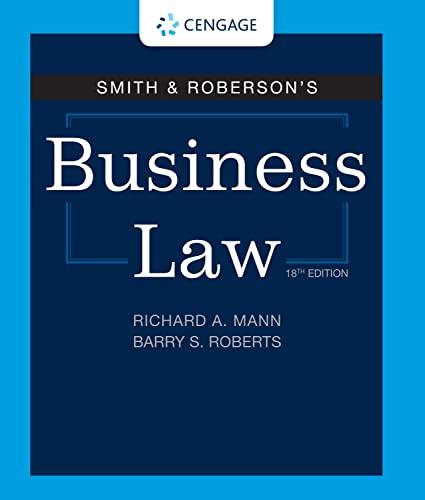Question
Carol is an outstanding manager. She has worked for C&S pharmaceuticals for 15 years. She has received five promotions and is currently responsible for abstracting
Carol is an outstanding manager. She has worked for C&S pharmaceuticals for 15 years. She has received five promotions and is currently responsible for abstracting and quality operations. Carol has been quick to identify personnel problems and provides educational and instructional support to her staff.
Carol supervises Joan, who is often absent or late for work. When she does come to work she makes many mistakes, but she always seems to meet work standards prior to her performance reviews. Various forms of motivation, education, and administrative support have been offered to Joan in the past. This week, Joan failed to show up for three days without notifying the office. The company policy states that if an employee does not show up for work for three consecutive days without notifying the office by the end of the third business day (5 p.m.), the employee's employment shall be terminated.
On the third day, some managers may be anxiously waiting for the employee to call and explain the absence, but this was not the case with Carol. Carol had recognized that this employee was nonproductive, noncompliant and met the criteria for job abandonment. Carol was prepared to terminate Joan, because she repeatedly demonstrated a clear disregard for the policy related to reporting to work. Carol no longer had any patience for Joan's behavior. Carol was confident that the employee was not going to comply with the policy and that this would be an easy termination. She completed the termination paperwork based on job abandonment at 3 p.m. and left it on her desk for the 5 p.m. submission to the human resources department. At 4:30 p.m., Carol's secretary told her that Joan was on the telephone, but Carol did not accept the call. The paperwork was sent to the human resources department at 5 p.m. and Joan's employment was terminated the next day due to the her unethical behavior (Flite and Laquer, 2006, 510).
What are the ethical implications from the above Case Study? What are the forthcoming problems that are going to arise?
Retrieved from Health InformationManagement Technology: An Applied Approach; 4th Ed.; Sayles, Volume Editor; AHIMA, Publisher.
Step by Step Solution
There are 3 Steps involved in it
Step: 1

Get Instant Access to Expert-Tailored Solutions
See step-by-step solutions with expert insights and AI powered tools for academic success
Step: 2

Step: 3

Ace Your Homework with AI
Get the answers you need in no time with our AI-driven, step-by-step assistance
Get Started


